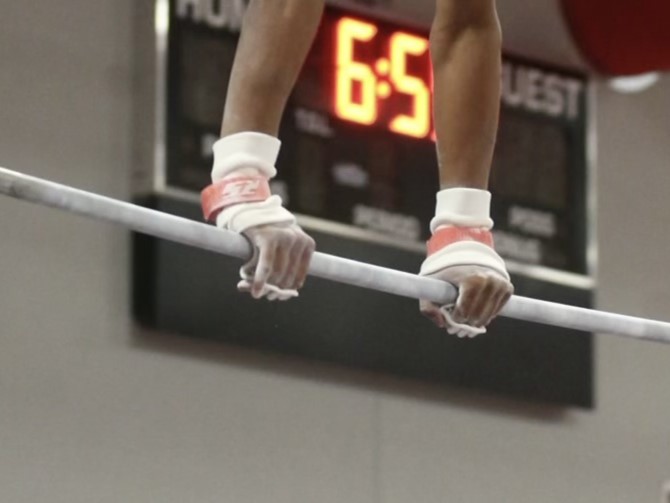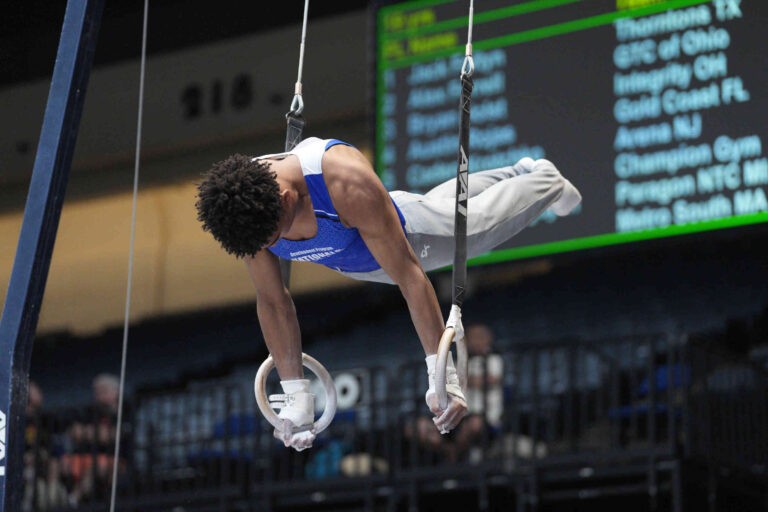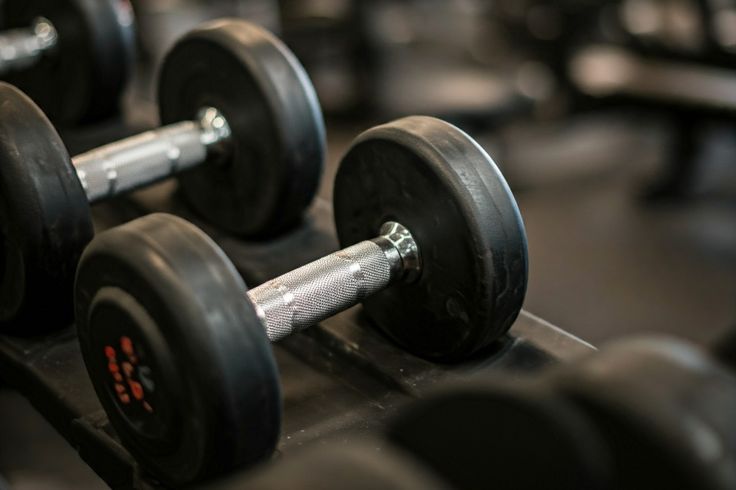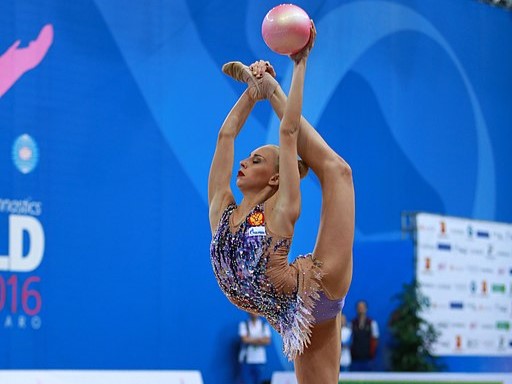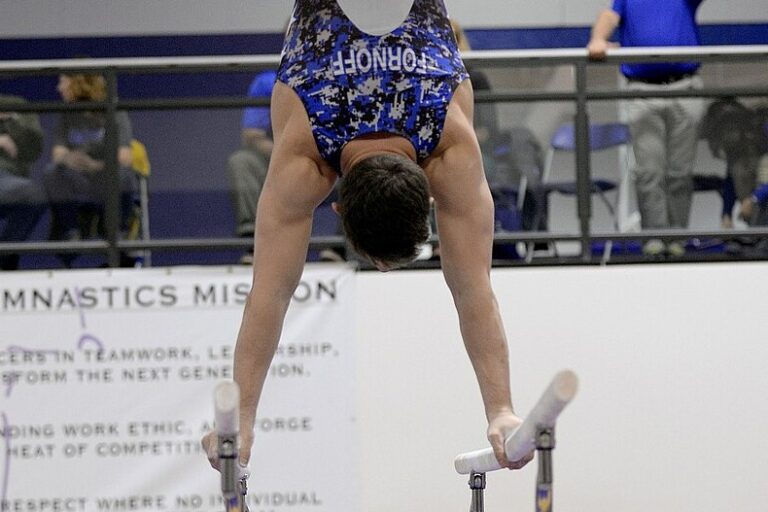Summary
Gymnasts tend to be short, with top athletes like Simone Biles standing at just 4’8″. However, studies show intensive gymnastics training doesn’t stunt growth or impact adult height, though more evidence is needed to answer some remaining questions about the relationship between gymnastics training and maturation.
Instead, being smaller offers advantages in the sport, such as better balance and quicker rotations. Taller gymnasts can highlight their aesthetics and perform better on certain events, but overall, height in gymnastics – or lack thereof – may be more beneficial.
Gymnastics is known for its short athletes. Take USA’s Olympic Men’s Gymnastics team for example. Brody Malone, the tallest athlete on the team, stands at 5′ 6” while Asher Hong, the shortest athlete, is only 5′ 1”. The best female gymnast in the world, and one of the greatest Olympic athletes of all time, Simone Biles is only 4′ 8”. Are these athletes naturally short, or did gymnastic training contribute to their stature? Let’s take a look at what evidence exists for whether gymnastics stunts growth.
Common Concerns About Gymnastics & Growth
There are a few common health and growth concerns about gymnasts, especially those who start at a young age. One of the concerns is that intense gymnastics training stunts growth and causes gymnasts to be short in adulthood. It is thought that the constant impact of rebounding and landing might affect bone development. Another concern is that training causes delayed physical maturation of young athletes. The intensity and amount of training performed may affect the hormones of young and growing athletes which could contribute to problems with maturation.
Current Review of Scientific Evidence
Effect of Gymnastics on Height
A review of the literature studying growth in gymnasts titled “Role of Intensive Training in the Growth and Maturation of Artistic Gymnasts” found that gymnastics training generally did affect the growth of athletes. The article concluded that intensive gymnastics training from a young age through puberty did not affect adult height. Likewise, it seems limb length is unaffected by gymnastics training. The article also found that gymnasts have an appropriate ratio of weight to height despite being shorter and lighter than the general population.
A 2003 article published in Pediatric Exercise Science reviewed scientific literature about the relationship between intense gymnastics training and athlete growth and maturation and found that evidence did not suggest training had a negative effect.
Does Gymnastics Reduce Bone Growth?
A 2018 systematic review found gymnastics activity positively influences bone accrual during growth, with young gymnasts showing an increased bone mineral density and mineral content than untrained kids. Although early initiation and the aesthetic demands of elite gymnastics is thought to decrease development, the high-impact, weight-bearing nature of gymnastics effectively promotes bone development. Regular participation, even at the rec level, significantly benefits bone health in children, with just a few hours of training per week yielding positive effects.
Unanswered Questions
However, a few questions still remain. The review stated that there is not enough evidence about how intensive gymnastics training affects the endocrine system. So more research is needed to determine if hormones that affect athlete growth are impacted significantly by intensive training. Whether this effect is specific to gymnastics training or high intensity training associated with other sports also is unclear. Likewise, the current body of evidence is limited for males, so whether we can definitively generalize these findings to male gymnasts is still out for debate.
So Why Are Many Gymnasts Tiny?
Conventional thought is that the smaller an athlete is the, the easier it will be to do gymnastics. USA Gymnastics has an excellent article explaining how gymnasts twist. When twisting a gymnast has a set amount of angular momentum. By bringing the arms close to the body, or tilting the body, the radius of rotation shortens decreasing moment of inertia. This causes the body to rotate more while conserving angular momentum. The same applies to rotation from flipping elements when an athlete tucks or pikes. Taller or wider athletes naturally will have a wider radius of rotation, limiting how much they can decrease inertia and speed up rotation.
Likewise, shorter gymnasts have a lower center of mass, improving balance. This is particularly important for an event like beam in women’s gymnastics, but also for landings or and handstands, the most vital skill in the sport.
Especially for male gymnasts, being smaller may come with better leverage for strength elements such as those performed on rings. Similarly, small gymnasts may have a more favorable strength to weight ratio, further contributing to the ability to perform difficult strength skills.
In fact, the 2003 Pediatric Exercise Science article suggests that coaches, parents, or the athletes themselves may select the sport based on stature, which results in a higher percentage of short and late blooming athletes.
Are There Any Advantages For Tall Gymnasts?
From an aesthetic standpoint, taller gymnasts may be able to demonstrate better “lines” that result in greater execution on their performances. For example, on an event like high bar where extension is a principle of performance, tall gymnasts can really emphasize full body extension through their swing and flight elements. Likewise, handstands on any event benefit from this appearance of extension.
Mechanically, a tall gymnast will have an easier time producing bend in an apparatus like High Bar, Parallel Bars, or Uneven Bar. The bounce of the bar is a key characteristic of these events and making use of the bend produces more swing and flight for the athlete to use.
Essential Equipment for Home Gymnastics
Disclaimer: This article offers general gymnastics equipment and training information, not professional advice. Consult a coach or healthcare provider before training, especially with health concerns. Children/beginners need qualified supervision. We are not liable for injuries from this information. See our disclaimer/privacy policy. Some links are affiliates, earning us commissions at no cost to you. Home…
Men’s Gymnastics: A Simple Guide to Horizontal Bar
The concluding event to the Men’s Gymnastics Olympic Order, the Horizontal Bar offers gymnasts the opportunity to perform a high flying display of daredevil acrobatics. Routines on the horizontal bar, also known as the High Bar, involve acrobatic releases and regrasps that are thrilling for athletes and spectators. While Each skill on high bar appears…
Continue Reading Men’s Gymnastics: A Simple Guide to Horizontal Bar
Simple Guide to Men’s Gymnastics – Overview of the Still Rings
The third event in the men’s gymnastics Olympic order, the Still Rings symbolizes strength and poise. Strength holds such as the iron cross iconically represent the might required to be a great gymnast on the Rings. Indeed, a gymnast must be one of the pound-for-pound strongest athletes on earth in order to be the “Lord…
Continue Reading Simple Guide to Men’s Gymnastics – Overview of the Still Rings
Importance of Lower Body Weight Training for Gymnasts
Weight training is crucial for gymnasts’ lower body strength, complementing bodyweight exercises. It reduces injury risks, improves power production, and offers advantages over bodyweight training alone. Incorporating weight training into gymnastics conditioning enhances performance, injury prevention, and long-term athletic development. Strength and conditioning is vital to well-structured gymnastics training. While most gymnastics strength and conditioning…
Continue Reading Importance of Lower Body Weight Training for Gymnasts
Exploring the Seven Exciting Disciplines of Gymnastics
The International Gymnastics Federation (FIG) governs eight diverse gymnastics disciplines, each showcasing unique skills and artistry. From the popular artistic gymnastics to the emerging parkour, these disciplines combine strength, flexibility, and precision. This article explores the key features of artistic, acrobatic, trampoline, tumbling, rhythmic, parkour, and aerobic gymnastics, highlighting their distinct characteristics and competitive formats.…
Continue Reading Exploring the Seven Exciting Disciplines of Gymnastics
A Deep Dive into Men’s Gymnastics: The Four Element Groups for Each Event
In Men’s Artistic Gymnastics, each apparatus has four unique element groups that organize skills by movement patterns. These groups are crucial for scoring, with gymnasts earning 0.5 points for fulfilling a group using a D-value or higher skill. Each event—Floor, Pommel Horse, Still Rings, Parallel Bars, High Bar, and Vault—has specific element groups that challenge…
Continue Reading A Deep Dive into Men’s Gymnastics: The Four Element Groups for Each Event


